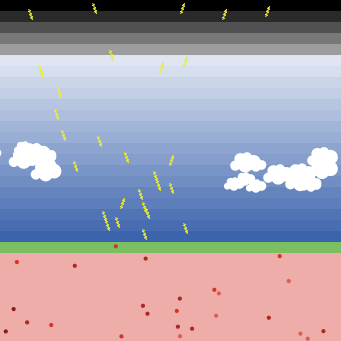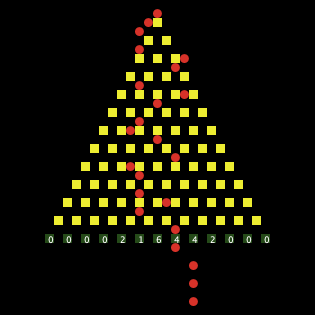random-float
random-float is a mathematics primitive that reports a random floating point number anywhere between 0 and the given number. For instance, random-float 10 could report 6.9105, 7, 4.2, 0.451, 0.0000001, 9.99999, etc. random-float is very useful in modeling phenomena that require continuous numbers. For example, if we wanted to create a model where we wanted to have people with various heights, we could write the following code, which would make each person have a random height between 5 feet to 7 feet:
create-people 100 [
set size 5 + random-float 2
]
Things to keep in mind when using random-float:
- If you want to generate a random number between a custom range, you can use the following format:
minnumber + (random-float (maxnumber - minnumber)). For example, if we wanted to generate a random floating point number between 4 and 7, we would write the following code:4 + random-float 3. - In the common case where you want to get a random value that is somewhere in between the minimum and maximum x or y coordinates, you can use the procedures
random-xcorandrandom-ycor, which also report back non-integer values. - Because
random-floatwill return a number between 0 and (n-1),random-float 5.0could report0.0, but it could never report5.0. The highest numberrandom-floatcould report is4.999999....
In the model example below, we use random-float to randomly place a dart somewhere on (or off of) a dartboard. By using random-float, we are ensuring that the dart could land at every possible point on the dartboard, not just integer points.
Try it Yourself
What's next?
Once you mastered the random-float primitive, don't stop there. Check out the resources below to improve your NetLogo skills.
Published NetLogo models that use the random-float primitive:
Similar primitives:
random-normal
Reports a random number with decimal points that is picked from over a normal distribution with a specified mean and standard deviation.
globals
Defines variables that can be accessed throughout the whole model and has the same value for all the agents.
turtles-own
Declare a variable that belongs to turtles.



